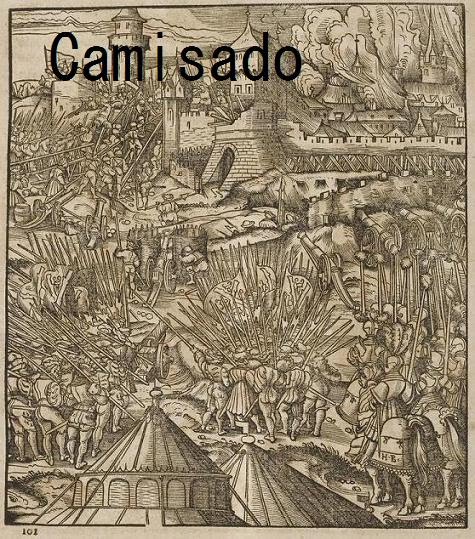This is the last group of figures that I have completed for my company of Tudor infantry from the 1540s, the archers. I decided to go for more toned down colours than I used for the Arquebusiers, who were far more likely to have been Spanish and Italians employed by the English Crown and thus perhaps in more colourful clothing, and I am pleased with the results. Some of the figures are in the white uniform coats while for others I have decided to depict them in their own coats or doublets with the St Georges Cross sewn on and a red trim added. I really like the resulting look of the group. While they are not all uniformed, which for some reason I feel gives a bit too much of a "Toy Soldier" look with these white coats (have a look at the billmen to see what I mean http://camisado1500s.blogspot.co.uk/2014/05/tudor-billmen-and-whifflers.html), there is still uniformity.
You may notice a difference from my earlier figures with the bases. The bases have been a thorn in my side for a long time. When I initially started my Italian Wars collection, years ago, they were a stop gap while I decided how I wanted to base my figures and how many I wanted to go on a base. The problem was as I kept painting and hadn't come to a decision more and more figures ended on on the flock bases and the whole collection was based the same! When I painted up the Perry Wagons I realised that they would look terrible on just plain flock bases, as the bases have to be large, so I did something different with them. The Wagon bases still fit in fine with the other figures in my collection, especially when on the terrain boards so this led me to have a go with a similar style of basing with these figures. I hope you will agree they are a big improvement although saying that I have ordered some other basing bits and pieces and may now embark on a period of experimentation to find something suitable. It's always a work in progress and I am still undecided how I will do the bases from now on. With regard to the entire collection I think rebasing the lot would be an enormous task but I may do some of my favourite troops like the Swiss pike block I converted and painted. Redoing all the Tudors would not be a huge task and as they are a distinctly different period from my Italian Wars stuff this would probably be a good idea.
At the moment I am in the rare position of not having much to paint! I have a couple of little bits and pieces to do that should show up here in the next few months and I have one more big terrain piece to complete, I haven't got the terrain bug out of my system quite yet. Really I am waiting for the Perry Light Cavalry, 1450-1500, for which I have ideas of at least three different troop types I want to use them for, some requiring more conversion work than others. I am also keen to see how the Pro Gloria Miniatures Plastic Landsknecht figures turn out, the crowd funder for which starts next Sunday 2 November. The completion of both of these plastic kits, could be many months off however. I love this 1540s-1550s stuff by The Assault Group and will keep and eye on the releases for this range as well as there are meant to be more in the next couple of months and I do need some opponents for my 100 or so Tudor Infantry. When I get time I will get some shots of the whole company set out on my terrain board. I am keen to see what they all look like when set out together.
 |
| Tudor Command by The Assault Group |
 |
| Tudor Bowmen |
 |
| Tudor Archers |
















